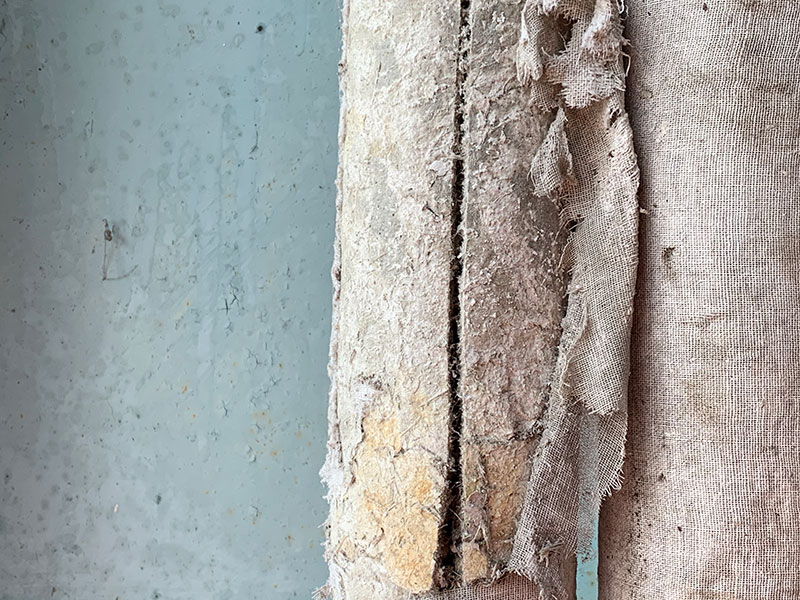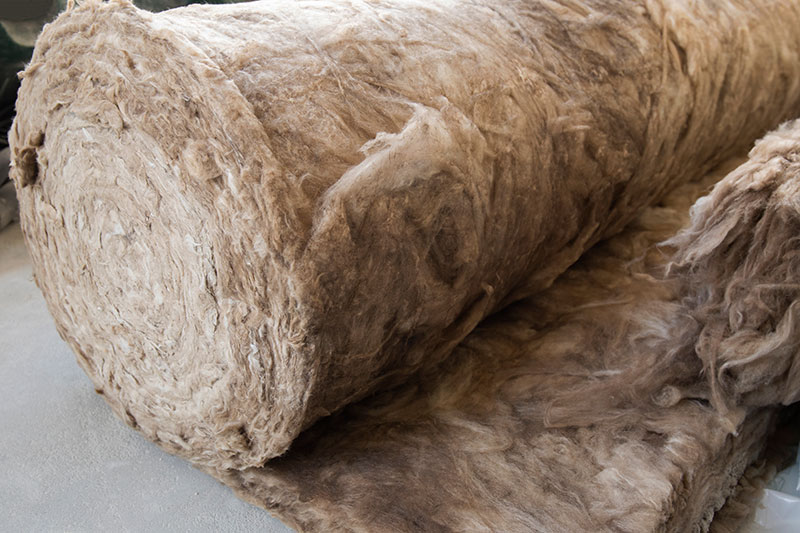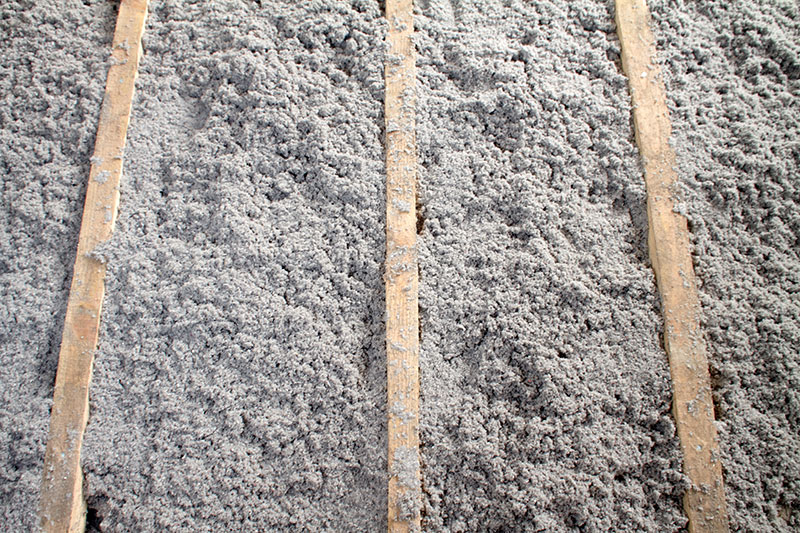How To Tell the Difference Between Asbestos Insulation, Fibreglass Lagging and Cellulose Insulation
At a time when energy efficiency has been a more pressing topic than ever for many of us, it is fair to say that fresh attention has also been drawn to the crucial role insulation can play in a property.
When a property is well-insulated, the occupiers can count on the temperature in the property remaining relatively consistent right through the year; it helps the property to not only retain heat inside during the winter but also avoid excess heat in the summer. Those characteristics will help ensure that those using the property do not require much additional heating or cooling.
However, it is one thing to know about the important role insulation has in a property and quite another thing to know the different types of insulation that exist and how to tell them apart.
So, below, we have taken a closer look at three types of insulation that have been widely installed in properties in relatively recent times. We have set out the distinctive qualities of asbestos, cellulose, and fibreglass insulation and what you ought to know about these different materials.
Asbestos insulation: what is it and what does it look like?
What is asbestos insulation?
Asbestos is a naturally occurring fibrous silicate mineral that was once widely used for various industrial purposes, including property insulation. With the passing of the years, however, the very serious risks that the material posed to human health became much more widely known, culminating in a final ban being imposed on the use of asbestos in the UK in 1999.
Today, it is cellulose that is widely used in place of asbestos for the insulation of homes. However, historical asbestos insulation remains in place in many UK properties that were built prior to 2000.
What does asbestos insulation look like?
Asbestos insulation often looks fluffy and loose, similar to candyfloss or cotton wool. It can appear white, grey, or blue-grey in colour, with a slightly shiny or fibrous texture. Loose-fill asbestos may be found in lofts, under floorboards, or inside cavity walls, while pipe lagging and insulation boards look more solid and chalky.
Visually, it can often be tricky to tell the difference between asbestos insulation and cellulose insulation. However, while cellulose tends to look like greyish shredded paper, asbestos insulation is generally more pebble-like in its appearance and is greyish-brown or silver-gold in colour.
The fibrous nature of asbestos means that it tends to look like cotton in its texture; it is also shinier than cellulose and tends to stay in lumps.
What are the advantages and disadvantages of asbestos insulation?
Prior to the banning of its use, asbestos was frequently chosen as an insulation material for a multitude of reasons, including its high thermal insulation capacity and its impressive heat resistance that prevents it burning easily. It is also weatherproof and extremely durable.
As for the major disadvantage of asbestos insulation – that is, of course, the immense peril it can pose to human health. The inhalation or ingestion of asbestos fibres is linked to a higher risk of certain serious health conditions, such as mesothelioma.
The good news is that if any existing asbestos insulation in your home is in good condition and undisturbed, it should not pose any risk to health. But if particles from your asbestos insulation were to become airborne – for example, as a result of being disturbed, in a situation where damage or wall cavities allow the particles to reach the living areas of your property – there could be a risk of those who live in your property breathing in the fibres, without even knowing.
Fibreglass insulation: what is it and what does it look like?
What is fibreglass insulation?
In some ways, the definition of fibreglass insulation is set out by its name; it is made from very thin glass fibres. Or to be more specific, the material that makes up these bunched-up, hair-like fibres is the same one used in the manufacturing of glass – silica, which is the main constituent of sand. In effect, then, fibreglass insulation consists of recycled glass fragments as well as pure sand.
Fibreglass insulation was first developed for use in residential properties in the 1930s. However, it began to particularly gain in popularity as it gradually became apparent just how harmful asbestos was to health.
What does fibreglass insulation look like?
Fibreglass insulation is provided in the shape of blankets or sheets and usually looks like soft, fluffy batts or rolls with a pink, yellow, or white colour. The way in which this type of insulation is created – through the cementing together of the hair-like fibres – results in something that looks and feels like wool.
It has a cotton-candy-like texture and may be faced with foil or paper. Loose-fill fibreglass appears as small, lightweight particles. It’s often found in lofts, walls, and floors of modern homes. It is often formed into batts or rolls or left loose as blown insulation.
What are the advantages and disadvantages of fibreglass insulation?
Fibreglass is a quite cheap form of insulation that is very easy to install, even for mere ‘DIYers’. Once installed, it is very effective as an insulator, with the ability to reduce a typical home’s energy bills by potentially hundreds of pounds a year when used in the loft.
The fireproof nature of fibreglass also makes it a great option for ceiling insulation and for use around light fixtures and other electrical items. And with fibreglass often being made from recycled glass and the non-recycled part being made from sand, it has good credentials as an environmentally friendly, renewable form of home insulation.
With regard to the disadvantages, it should be borne in mind that this product consists of tiny slivers of glass that can be harmful to the skin and if breathed in. For this reason, masks and gloves should be worn for protection when the material is being installed.
Also, the material loses its insulation qualities if it becomes wet – for example, if there is condensation or a leak in the roof.
Cellulose insulation: what is it and what does it look like?
What is cellulose insulation?
Cellulose is one of the oldest forms of insulation; it is typically made using recycled paper products, such as paper, newsprint, and cardboard boxes. The production process for cellulose insulation involves the paper being shredded into pieces and fiberized, which enables the resultant material to be packed tightly when used as insulation.
What does cellulose insulation look like?
As we touched on above, going by appearance alone, it can be easy to mistake cellulose insulation for asbestos insulation or vice versa.
However, whereas asbestos tends to have a cotton-like texture, cellulose insulation typically looks like grey, shredded paper or soft, fibrous material. It resembles ground-up newspaper with a fluffy or dusty texture. Made from recycled paper products, it’s often treated with borate for fire resistance. Cellulose is usually blown into wall cavities or attics, and can appear loose or slightly clumped.
What are the advantages and disadvantages of cellulose insulation?
With cellulose being made from recycled paper, it can be considered an environmentally friendly form of home insulation.
No harmful emissions or chemicals are produced when cellulose insulation is installed in a property. Furthermore, once it is in place, its effectiveness in keeping a home’s temperature consistent through the seasons will help lower the property’s carbon footprint, as there will be less need for any extra heating or cooling.
Another key benefit of cellulose insulation is its versatility; whether additional warmth or protection against the elements is needed in the walls, attic, or elsewhere, it provides an easy way of insulating a property.
So, what are the disadvantages of cellulose insulation? One drawback is the tendency of the material to settle and compress over time, which could make it less effective as an insulator. Indeed, it is not as effective at insulating as some alternative materials, such as fibreglass.
The fact that cellulose is made from paper and other fragile materials also mean there could be scope for insects or rodents to damage it.
What should you do if you suspect the presence of asbestos insulation?
Hopefully, the above information will have left you feeling more confident and better informed in relation to the differences between these types of insulation. As a consequence, you should be able to more easily identify what material any given insulation or lagging is likely to be.
With different insulation materials often looking very similar, if you are in any doubt as to whether your property’s insulation could contain asbestos, we would urge you not to touch it, but instead to get in touch with asbestos experts like our own at Oracle Solutions.
We can arrange for samples to be extracted from your property’s insulation so that you can ascertain whether asbestos is present and take responsible steps in light of this. If the material does turn out to contain asbestos, you might choose – depending on the exact situation – to leave the material in place or have it completely removed.
To request your asbestos quote from us today, please feel free to call the Oracle team or send us an email.



